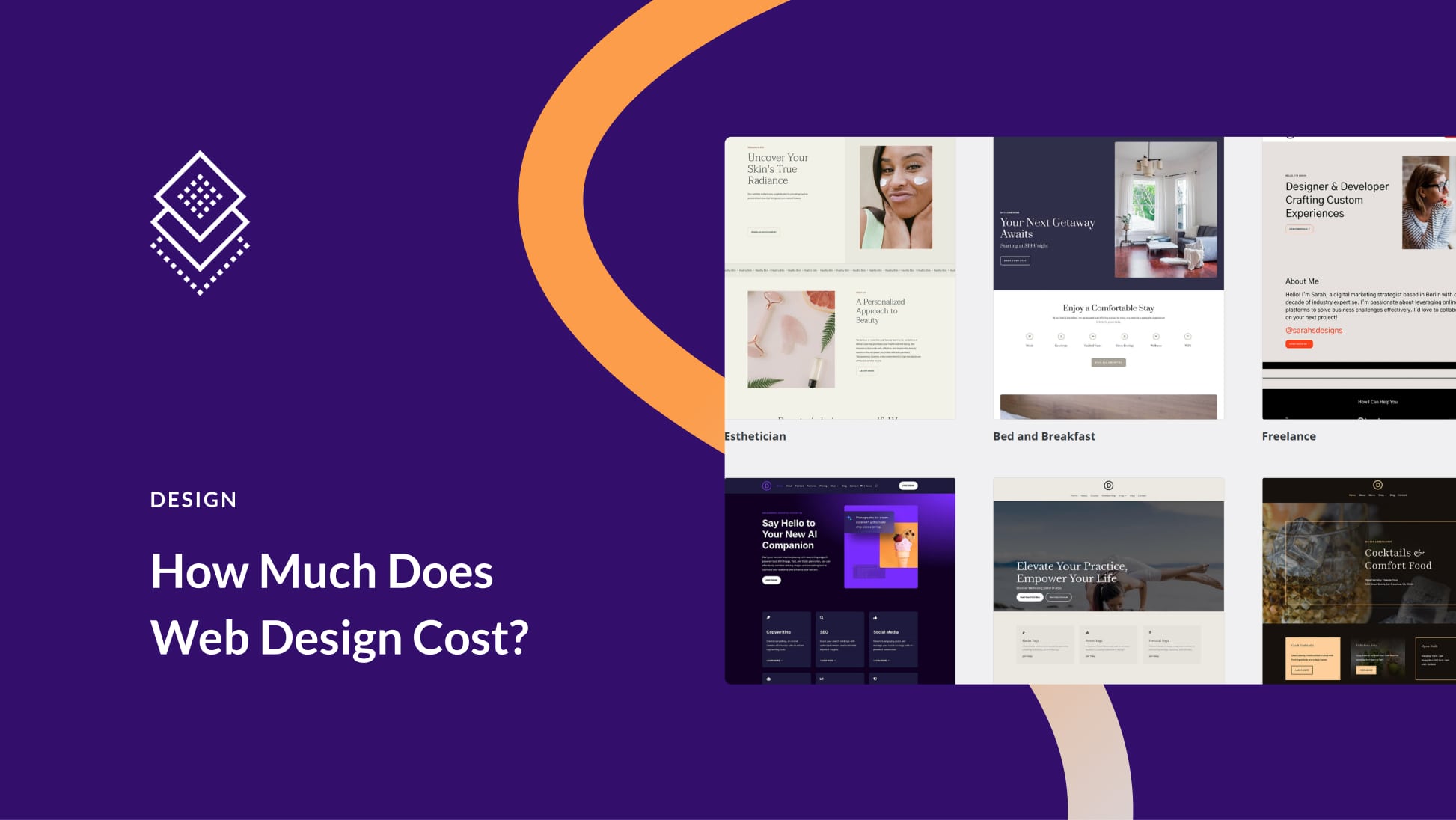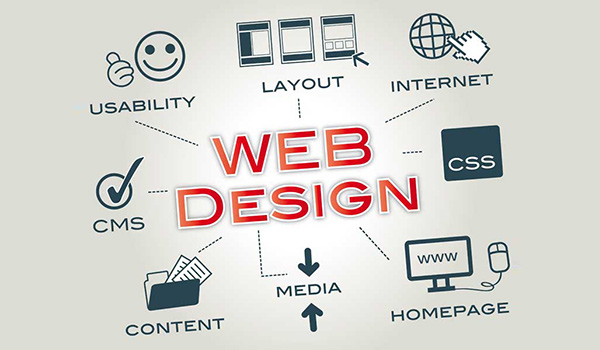Aligned Position Web Design: Building Responsive, Mobile-Friendly Websites for Modern Users
Aligned Position Web Design: Building Responsive, Mobile-Friendly Websites for Modern Users
Blog Article
The Most Effective Kinds Of Web Layout to Enhance Customer Experience and Engagement
In the ever-evolving landscape of digital interaction, the effectiveness of Web layout dramatically influences customer experience and involvement. Numerous layout strategies, such as minimal, receptive, and interactive layouts, each offer distinct advantages that can cater to varied customer demands.
Minimal Web Style
As electronic landscapes end up being progressively messy, minimalist website design has arised as an effective technique to improving individual experience. This design philosophy focuses on simplicity, concentrating on essential components while removing unneeded distractions. By utilizing ample white space, uncomplicated navigating, and a restricted shade combination, minimalist design cultivates clearness and directs user focus to crucial content.
The core principle of minimal website design is to develop a smooth communication for individuals. By decreasing cognitive lots, individuals can swiftly realize details without feeling bewildered. This straight approach not just enhances usability yet likewise urges interaction, as visitors are extra most likely to explore a site that is easy and aesthetically appealing to browse.
Furthermore, minimal design often stresses typography and imagery, making use of these elements purposefully to convey messages successfully. This focus on crucial elements can boost brand identity and develop a memorable individual experience. Fundamentally, minimalist Web design is not just a pattern; it is a thoughtful methodology that acknowledges the relevance of user-centered design. By removing additional components, designers can produce a much more interesting, efficient, and satisfying Web experience for all individuals.
Responsive Web Style
In today's diverse electronic setting, receptive website design has actually come to be essential for creating a seamless individual experience across a wide variety of gadgets. As individuals accessibility internet sites on mobile phones, laptop computers, tablet computers, and desktops, the ability of a site to adapt its design and content to different screen dimensions and resolutions is critical.
Responsive website design utilizes flexible grids, pictures, and CSS media questions to make certain that Web content is provided optimally, despite the tool made use of. This strategy not only enhances the aesthetic allure of a web site however likewise considerably improves use. Individuals are much more likely to involve with a website that provides a consistent experience, as it gets rid of the frustration of needing to focus or scroll excessively.
By embracing receptive style, businesses can enhance their presence and reach a more comprehensive target market. In summary, receptive Web design is a basic technique that improves customer experience, engagement, and general satisfaction.
Interactive Website Design
Receptive website design lays the groundwork for improving customer experience, but interactive Web layout takes this a step even more by involving customers in an extra dynamic way - Aligned Position Web Design. By integrating components such as animations, clickable prototypes, and real-time feedback, interactive website design mesmerizes users, drawing them into a richer browsing experience
This approach not only fosters interaction yet additionally urges users to discover material proactively as opposed to passively eating it. Techniques such as gamification, where customers gain incentives for completing tasks, can significantly improve the time spent on a site and enhance general fulfillment. In addition, interactive functions can streamline intricate details, making it more satisfying and absorbable.

Incorporating interactive design aspects can additionally result in greater conversion rates, as individuals are more probable to involve with a site that actively includes them. Aligned Position Web Design. Inevitably, interactive website design changes user experiences right into remarkable journeys, making sure that site visitors return time and again
Apartment Layout
Characterized by its minimalistic method, flat design highlights you could try this out simplicity and performance, removing away unneeded aspects and concentrating on essential features. This design approach focuses on functionality, making certain that customers can navigate interfaces easily and performance. By utilizing a tidy aesthetic, flat style removes the mess commonly discovered in a lot more elaborate styles, thereby enhancing user emphasis on web content and capability.
The trademark of flat design depends on its usage of strong colors, easy typography, and geometric forms. These aspects add to a visually enticing user interface that is both approachable and modern-day. In addition, flat style fosters a sense of clearness, allowing users to determine necessary actions and information without distraction.
Moreover, level design is particularly reliable in responsive Web style, as its simpleness translates well across numerous tools and display sizes. By concentrating on necessary features, flat style not just meets user requirements yet additionally encourages smooth interaction, making it a crucial part of effective Web design techniques.
Flexible Website Design
Flexible website design customizes the user experience by producing multiple repaired designs customized to various display dimensions and gadgets. Unlike responsive style, which fluidly readjusts a solitary format, flexible layout uses distinct layouts for particular breakpoints, making sure ideal discussion on different platforms. This method enables designers to concentrate on the distinct qualities of each device, enhancing use by delivering specifically what customers require based upon their context.
One of the main advantages of flexible Web design is its ability to enhance tons times and performance. By serving tailored web content and photos that fit see here now the customer's gadget, web sites can decrease information usage and improve loading rates. This is specifically valuable for users with slower connections or minimal information strategies.

Additionally, flexible design assists in a more constant and regulated branding experience. Because developers develop multiple designs, they can guarantee that the visual components align with the brand's identification throughout various platforms - Aligned Position Web Design. This causes a natural user experience, improving involvement and promoting individual retention
Final Thought
To conclude, the integration of minimalist, receptive, and interactive Web layout principles substantially enhances customer experience and interaction. Minimalist layout fosters clearness and emphasis, while receptive design makes sure flexibility across various devices, promoting access. Interactive layout astounds customers through dynamic elements, encouraging exploration and personalization. Collectively, these layout comes close to contribute to look at these guys the creation of user-friendly environments that not only improve complete satisfaction but also drive greater conversion rates, highlighting their essential significance in modern website design approaches.

Minimal design fosters clarity and focus, while responsive style makes sure flexibility throughout numerous tools, advertising ease of access. Collectively, these style approaches contribute to the creation of user-friendly environments that not only improve fulfillment however likewise drive higher conversion prices, emphasizing their vital value in contemporary Web design strategies.
Report this page